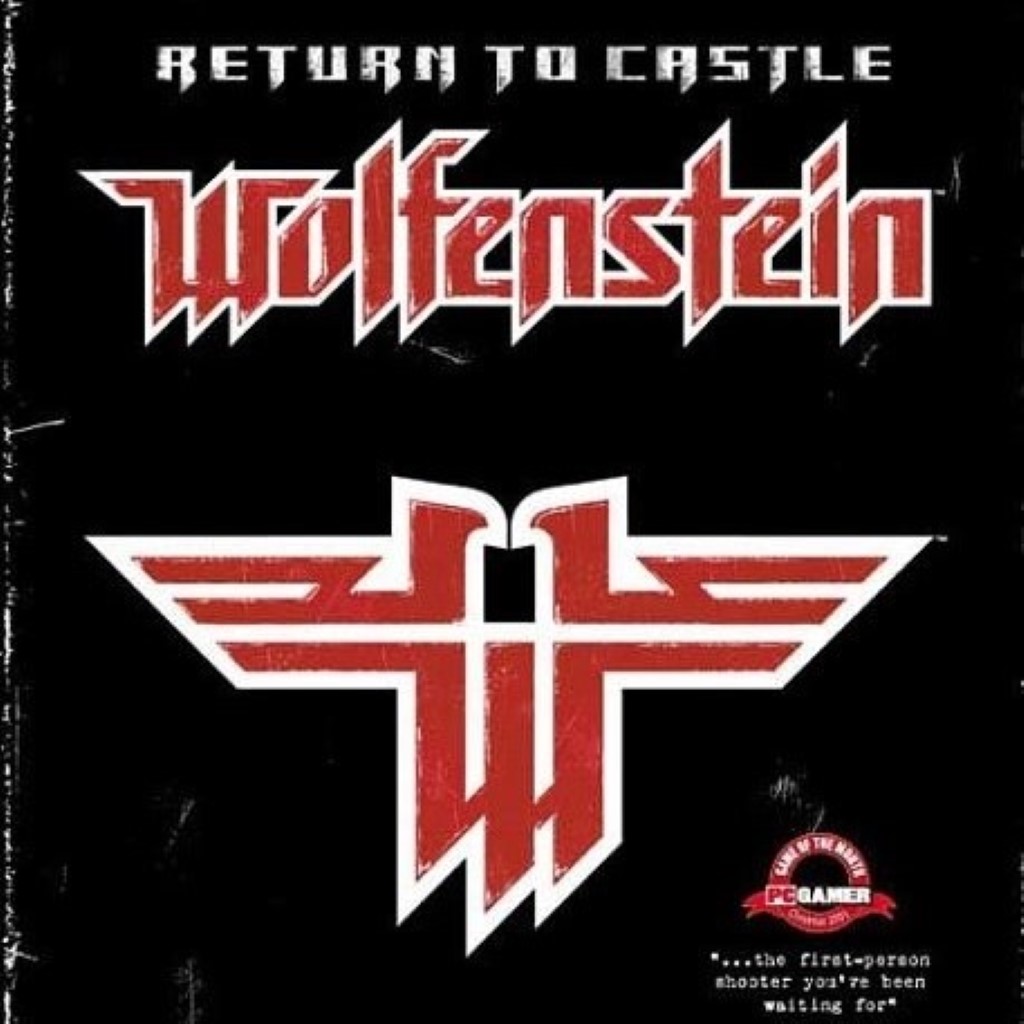In the ever-evolving realm of first-person shooters, few games capture the essence of their genre quite like Return to Castle Wolfenstein. Released in 2001 by id Software and Gray Matter Interactive, this game is a reimagining of the classic “Wolfenstein 3D” that originally set the standard for first-person shooters back in 1992.
Set against the backdrop of World War II, players take the role of B.J. Blazkowicz, an Allied spy tasked with infiltrating the ominous Castle Wolfenstein. As he delves deeper into the castle’s dark secrets, players are treated to a rich blend of action, strategy, and horror. The game masterfully combines historical elements with fictional narratives, creating a compelling experience that has captivated gamers for over two decades.
In this review, we will explore the various facets of Return to Castle Wolfenstein, from its innovative gameplay mechanics to its atmospheric graphics and sound design. We will also delve into the storyline, examining the plot’s intricacies and character development. By the end, you’ll understand why this classic game continues to be a beloved title in the annals of video game history.
Gameplay
Mechanics
Return to Castle Wolfenstein delivers a blend of classic first-person shooter mechanics with some innovative twists that keep the gameplay engaging and fresh. The control scheme is intuitive, allowing players to quickly adapt to the game’s pace. Movement is fluid, and the arsenal of weapons, ranging from simple pistols to flamethrowers and experimental technology, provides a satisfying variety of options to approach combat scenarios.
One of the standout features is the game’s health and armor system, which requires strategic resource management. Health packs and armor are scattered throughout levels, but they are often placed in precarious positions, forcing players to weigh the risk-reward of retrieving them. This adds a layer of tactical decision-making to the otherwise fast-paced action.
Level Design
The level design in Return to Castle Wolfenstein features immersive and challenging environments. Levels are meticulously crafted to offer a balance of open combat zones, tight corridors, and hidden secrets. The game encourages exploration, with numerous hidden areas and ‘Easter eggs’ that reward curious players with additional health, ammo, and lore.
The levels are varied, taking players through fearsome catacombs, fortified bunkers, and ‘The Castle’ itself, each with its own unique challenges and atmosphere. This variety keeps the gameplay from becoming monotonous and ensures players remain engaged throughout the campaign. The environmental design also plays a critical role in the storytelling, with each setting contributing to the overall narrative and mood of the game.
Enemy AI
The enemy AI in Return to Castle Wolfenstein is surprisingly sophisticated for its time (2001). Enemies exhibit ranging behaviors, from basic grunts who charge headlong into battle to more strategic foes who take cover and flank the player. The AI’s ability to co-ordinate attacks and react to the player’s actions adds a dynamic element to encounters, making each skirmish feel unique and challenging.
Boss battles are another highlight, pitting players against powerful opponents that require a combination of skill, strategy, and quick reflexes to defeat. These encounters are well-designed and provide a satisfying sense of accomplishment when overcome.
Overall, the gameplay in Return to Castle Wolfenstein stands out for its polished mechanics, intricate level design, and intelligent enemy AI, all of which combine to create a compelling and immersive gaming experience.
Graphics and Sound
Visuals
The game boasts impressive visuals for its time, taking full advantage of the id Tech 3 engine. The environments are meticulously crafted; from the dank, labyrinthine corridors of Nazi strongholds to the fear-inducing, supernatural landscapes. Textures are sharp and detailed, giving a sense of authenticity to the historical settings. Lighting effects enhance the atmosphere, with shadows dynamically casting an ominous tone that complements the game’s blend of action and horror.
Character models are also noteworthy, with level of detail that brings the various soldiers, scientists, and supernatural entities to life. The animations are fluid, whether it’s the realistic movements of enemy soldiers or the grotesque motions of undead creatures. Attention to detail extends to the weapon designs, each rendered with precision, adding to the immersive experience.
Soundtrack
The soundtrack of Return to Castle Wolfenstein is a masterful blend of orchestral and ambient music, designed to heighten the tension and enhance the gameplay experience. The music seamlessly transitions between haunting melodies and adrenaline-pumping tracks, perfectly matching the game’s pacing. Orchestral compositions evoke a sense of epic struggle, while the ambient sounds immerse players in the game’s various settings, from the cold, echoing halls of a castle to the chaotic noise of a battlefield.
Voice Acting
In-game voice acting is another strong point, adding depth and personality to the characters. B.J. Blazkowicz, the protagonist, is voiced with a gritty determination that fits his role as a seasoned soldier. The supporting cast, including both allies and enemies, are brought to life with distinctive voices that enhance their character traits. Nazi officers speak with menacing authority, while resistance fighters convey a sense of urgency and desperation.
The dialogue is well-written and delivered with conviction, contributing to the narrative’s impact. The game also includes various ambient voice clips and radio chatter that fill the environments with life, making the world feel dynamic and lived-in. This level of detail in voice acting helps to draw players deeper into the story and adds to the overall immersive quality of the game.
In summary, the graphics and sound design are integral to its success, creating a richly-detailed and atmospheric experience. The visuals set a high standard for the era, while the soundtrack and voice acting elevate the game’s narrative and emotional impact, making it a standout title in the first-person shooter genre.
Storyline
Plot Summary
Return to Castle Wolfenstein weaves an engaging narrative set against the backdrop of World War II, blending historical elements with supernatural intrigue. The player steps into the boots of B.J. Blazkowicz, an American Army Ranger and OSA (Office of Secret Actions) agent tasked with thwarting the nefarious plans of the Nazi regime. The story kicks off with Blazkowicz escaping from the clutches of the enemy in Castle Wolfenstein, a grim fortress filled with secrets and dangers.
As the plot unfolds, it is revealed that the Nazis are involved in sinister experiments to harness supernatural forces and create an unstoppable army. Blazkowicz must navigate through various environments, from the eerie catacombs beneath the castle to the snowy ruins of secret research facilities. The narrative seamlessly blends espionage, action, and horror, keeping players on the edge of their seats as they uncover the dark secrets of the Third Reich.
Character Development
While the game focuses primarily on fast-paced action and immersive gameplay, it does not skimp on character development. B.J. Blazkowicz is portrayed as a resilient and resourceful soldier, embodying the classic hero archetype. His stoic demeanor and unwavering determination make him a compelling protagonist, even if his personality is not deeply explored.
Supporting characters, such as agents from the OSA and various antagonists, add depth to the story. The game’s primary villain, Heinrich Himmler, is depicted with a chilling intensity that enhances the game’s atmosphere. The interactions between Blazkowicz and other characters, though limited, help to flesh out the narrative and provide context for the player’s missions.
Historical Context
One of the standout features is the clever use of historical context. While the game takes liberties with historical accuracy for the sake of entertainment, it roots its story in real-world events and locations. The inclusion of Castle Wolfenstein, a fictional yet believable Nazi fortress, adds a layer of authenticity to the game.
The plot’s incorporation of occult themes and secret experiments is inspired by actual historical rumors and theories about the Nazi regime’s interest in the supernatural. This blend of fact and fiction creates a captivating alternate history that feels both familiar and fantastical. The game’s attention to detail in recreating the era’s atmosphere, from the architecture to the uniforms, further immerses players in its world.
Overall, the storyline of “Return to Castle Wolfenstein” is a compelling mix of historical drama and supernatural adventure. It provides a solid narrative foundation that enhances the gameplay experience, making it not just a series of missions, but a thrilling journey through a dark and dangerous world.
Conclusion
Return to Castle Wolfenstein stands as a noteworthy entry in the first-person shooter genre, seamlessly blending fast-paced gameplay with an engaging narrative. The game successfully revives the classic elements that defined its predecessors while incorporating modern mechanics that enhance the overall experience. The meticulously designed levels and intelligent enemy AI provide a challenging yet rewarding adventure, drawing players deeper into the sinister world of Nazi occultism.
Visually, the game is a testament to its era, featuring detailed environments and character models that, while dated by today’s standards, were groundbreaking at the time of release. The soundtrack and voice acting work in harmony to create an immersive atmosphere, with each piece of music and every line of dialogue contributing to the game’s eerie and tense mood.
The storyline, rich with historical context and imaginative twists, provides a compelling backdrop for the action. Characters are well-developed, making their journeys believable and engaging, and the plot’s blend of historical facts with supernatural elements adds a unique flavor to the game.
In conclusion, Return to Castle Wolfenstein is more than just a nostalgic trip for fans of the original. It is a robust and entertaining game in its own right, offering a blend of action, strategy, and narrative depth that keeps players hooked from start to finish. Whether you are a longtime admirer of the series or a newcomer looking for a solid shooter with a rich story, this game is a worthy addition to your collection.
<iframe width="560" height="315" src="https://www.youtube.com/embed/i_Y4gIYdRPU?si=nw1fCfbo5SOZUQbD" title="YouTube video player" frameborder="0" allow="accelerometer; autoplay; clipboard-write; encrypted-media; gyroscope; picture-in-picture; web-share" referrerpolicy="strict-origin-when-cross-origin" allowfullscreen></iframe>




.jpg?w=100&resize=100,70&ssl=1)
